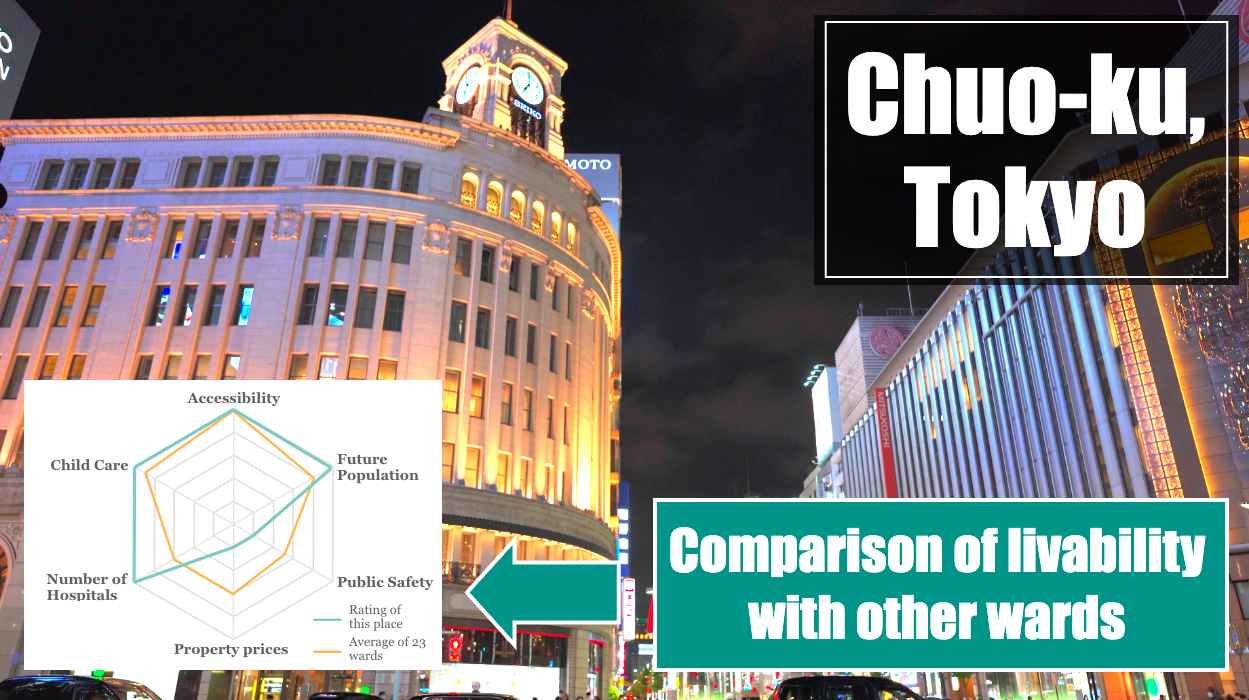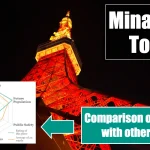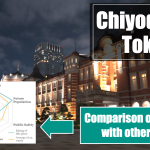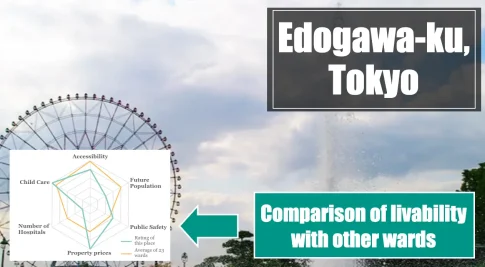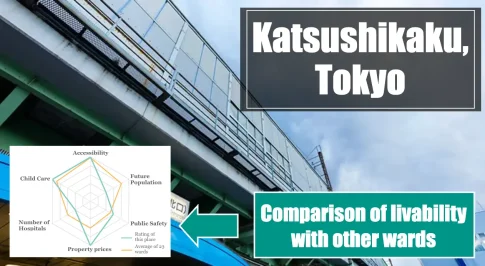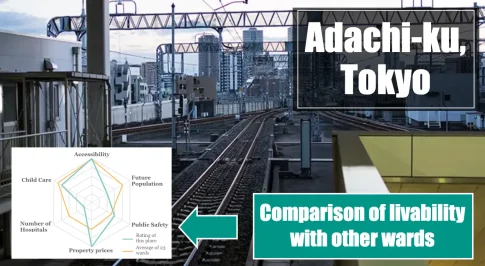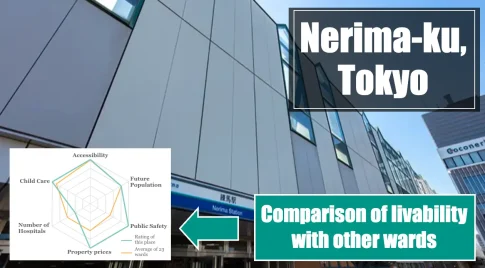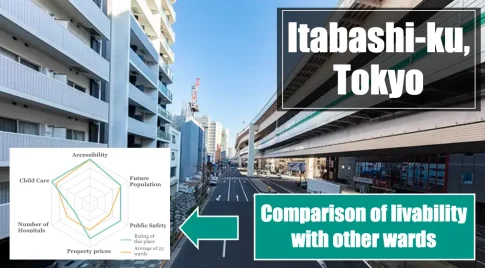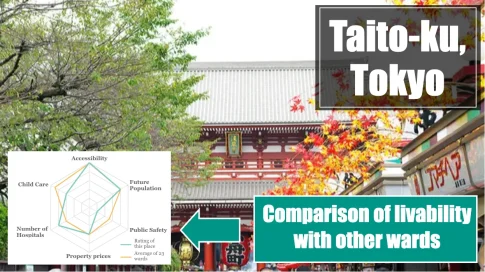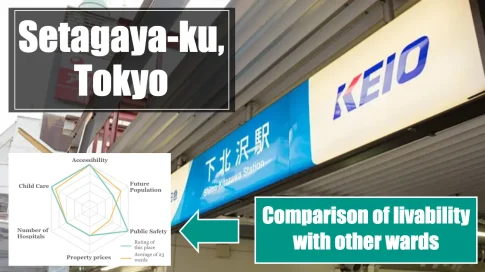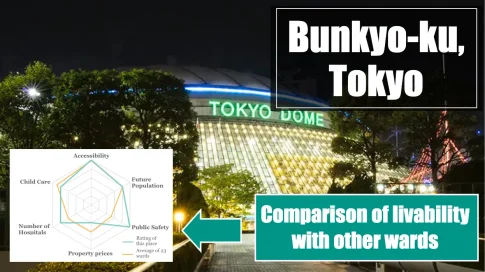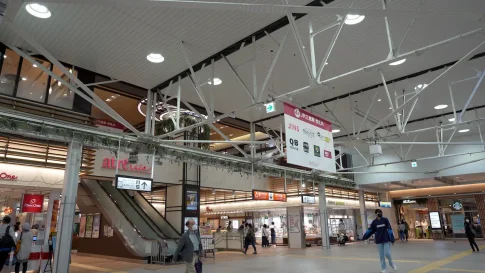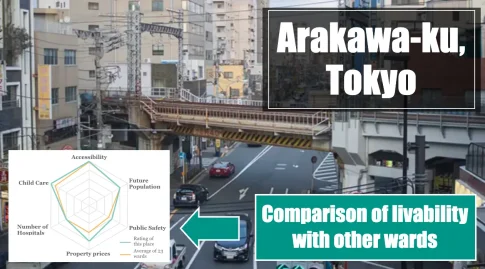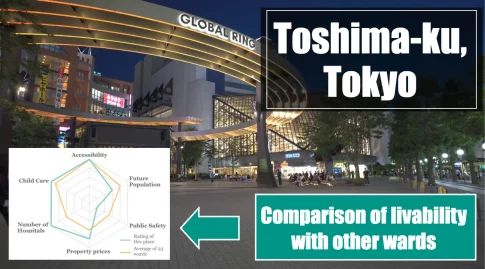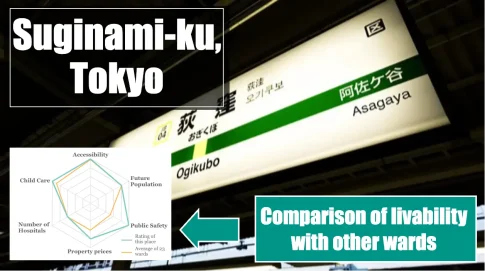This section introduces the livability of Chuo-ku, Tokyo compared to the other 23 wards.
Contents
Livability of Chuo-ku|First Conclusion
- Many hospitals
- No. of children on waiting list 0
- Not safe in Tokyo
- High property prices
Chuo Ward will become a popular area for tourists visiting Japan in the future, with plans for large-scale development of the former Tsukiji market site, as well as well-known commercial facilities such as Ginza, Mitsukoshimae, and Nihonbashi stations.
To give you a brief idea of the characteristics of the area, there are many hospitals and no children on waiting lists, but the area is not safe and the property prices are high.

Below is a detailed introduction with specific figures, so if you are considering moving to Chuo-ku, Tokyo, please read through to the end.
Compare Chuo-ku with other wards

▼Accessibility
Calculated by the time it takes to get out to the Yamanote Line station.
5 = within 15 minutes
4 = within 20 minutes
3 = within 25 minutes
2 = within 30 minutes
1=more than 30 minutes
▼ Future Population
Calculated as percent change in population in 2045 relative to current population.
Over 110% = 5
Over 100% = 4
Over 90% = 3
Over 80% = 2
Less than 80% = 1
▼ Public Safety
The number of perceived crimes per 1,000 population is evaluated using the following criteria
5= less than 4 crimes per 1,000 people
4= less than 5
3= less than 6
2= less than 8
1= more than 8
▼ Property prices
Compared to the respective averages for rentals and condominiums in the 23 wards of Tokyo
5=30% or more reasonable price
4=10% or more but less than 30% of the price of the property
3=Less than 10% of the price before or after
2 = 10% or more but less than 30% more expensive price
1 = 30% or more expensive price
and then summed and re-evaluated.
▼ Number of medical facilities
(The number of medical facilities is evaluated against the average of Tokyo’s 23 wards (excluding extremely expensive wards) using the following criteria.
5=30% or more
4=10% or more but less than 30
3=10% or more, but less than 10%.
2=10% or more but less than 30
1=30% or more
▼ Child Care
The following criteria are used to evaluate against the number of children on waiting lists.
5 = 0 children on waiting list
4=Less than 5 children on the waiting list
3=Less than 10 children on the waiting list
2=Less than 50 children on the waiting list
1 = 50 or more children on the waiting list
Above, the green line is the valuation of Chuo Ward, and the orange line is the average valuation of the other 23 wards of Tokyo. Let us look at each of them in turn.
Accessibility of Chuo-ku
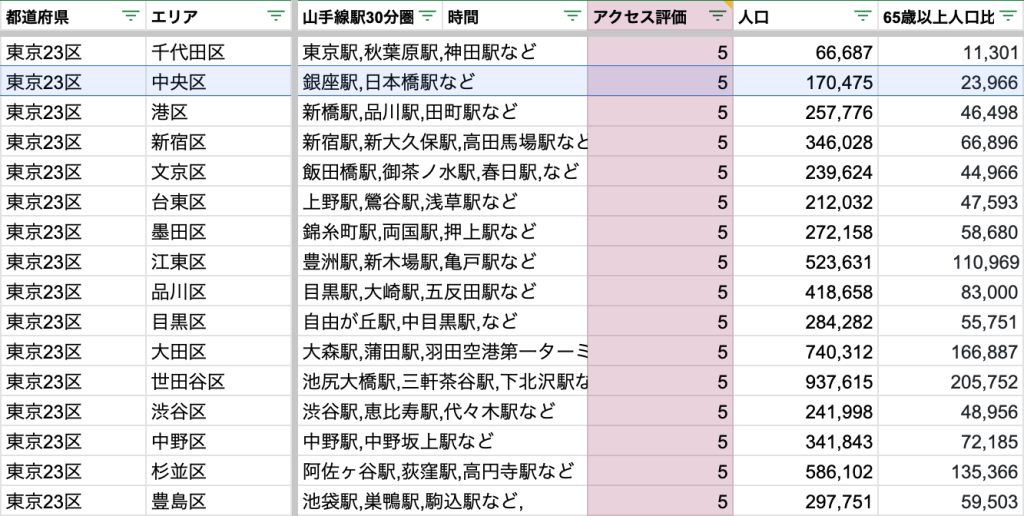
- JR Sobu Main Line: Shin-Nihonbashi Station, Bakurocho Station
- JR Keiyo Line (Tokyo-Soga): “Hatchobori” station
- Tokyo Metro Ginza Line: Mitsukoshimae Station, Nihonbashi Station, Kyobashi Station, Ginza Station
- Tokyo Metro Marunouchi Line (Ikebukuro-Ogikubo): Ginza Station
- Tokyo Metro Hibiya Line: Kodenmacho Station, Ningyocho Station, Kayabacho Station, Hatchobori Station, Tsukiji Station, Higashi-ginza Station, Ginza Station
- Tokyo Metro Yurakucho Line: “Ginza 1-chome”, “Shintomicho”, “Tsukishima
- Tokyo Metro Tozai Line: “Nihonbashi” “Kayabacho” station
- Tokyo Metro Hanzomon Line: Mitsukoshimae Station, Suitengumae Station
- Toei Asakusa Line: Higashi-Ginza Station, Takaracho Station, Nihonbashi Station, Ningyocho Station, Higashi Nihonbashi Station
- Toei Shinjuku Line: Bakuro-Yokoyama Station, Hamacho Station
- Toei Oedo Line: Tsukishima Station, Kachidoki Station, Tsukiji-Ichiba Station
Chuo Ward has 11 lines and 22 stations.

Although the Yamanote Line does not run through the area, there are 11 train lines, so it is difficult to feel inconvenienced when going anywhere.
Chuo-ku Population and Future Population

The population of Chuo Ward is approximately 170,500.
The future population in 2045 will be 190,496 (111.74%), an increase of about 20,000 from the current population. While the population is projected to decrease throughout Japan, a population increase of 11.74% is an excellent figure.

Even within the same 23 wards, there are areas where population is projected to decrease. In contrast, a significant increase in population is projected, which will further increase the value of the city, for example, in terms of real estate prices.
Is Chuo city safe?
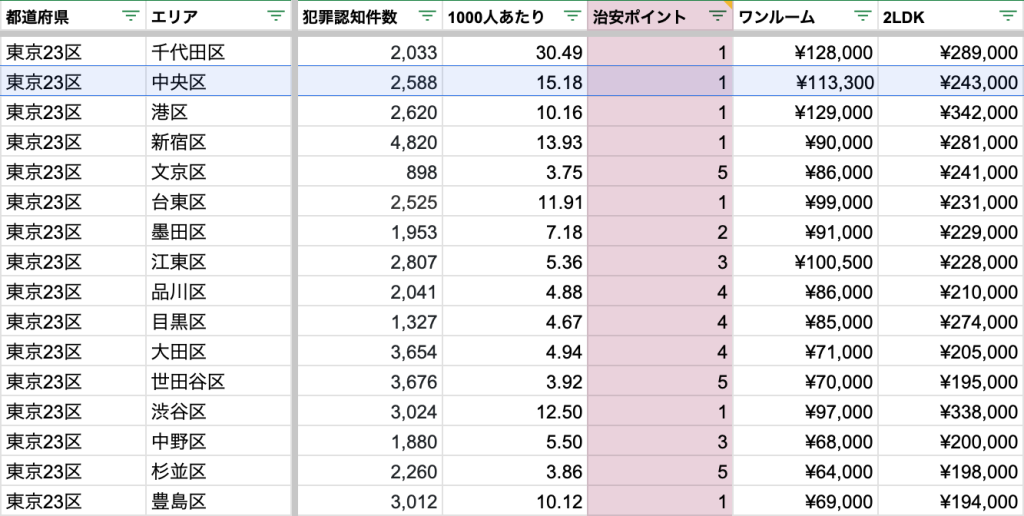
Compared to the surrounding wards, Chuo City gives the impression of being “bad” in terms of public safety.
The number of crimes in 2022 was 2,588, which is 15.18 crimes per 1,000 people in Chuo City.
Since the average number of crimes per 1,000 people in the other 23 wards of Tokyo is about 6 to 7, Chuo City was rated as “poor” in terms of public safety.
Property quotes in Chuo Ward
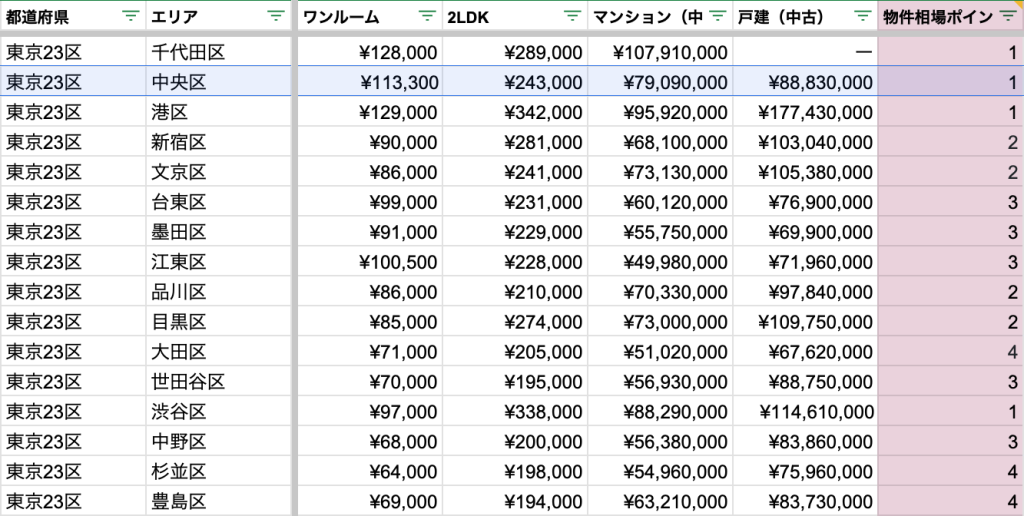
- One room rental = approx. 113,000 yen
- 2LDK rental = approx. 243,000 yen
- Condominium for sale = approx. 79,100,000 yen
- Detached house = approx. 89 million yen
The market prices of properties for rent and for sale in Chuo Ward are shown above.

The table shows that property prices in Chuo Ward are higher than in other surrounding wards.
Number of Hospitals in Chuo-ku

There are 504 hospitals and other medical facilities in Chuo City.
This is 2.96 per 1,000 people, which is “high” compared to the other 23 wards of Tokyo.
Chuo-ku Childcare
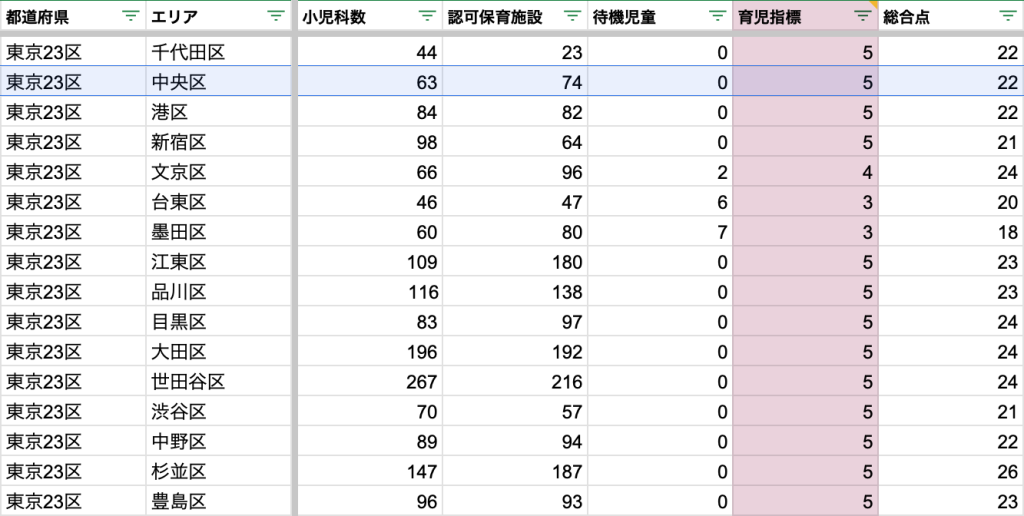
As it relates to childcare, the data for 2022 shows that there were 63 licensed childcare facilities and 0 children on the waiting list.

There are some wards within the 23 wards that have waiting lists. In contrast, Chuo City has 0 children, which is a great point for families who want to leave their children with us.
“待機児童=Taiki jidō” in Japan refers to children who need but can’t secure a spot in childcare facilities due to shortage. This is a major social issue.
What you need to know before moving to Chuo-ku

Here we report on the contents of the regional hazard measurement survey for earthquakes published by the Tokyo Metropolitan Government Bureau of Development.
The above figure is a color-coded diagram of five levels of “overall risk” calculated from two factors, “building collapse risk” and “fire risk.
According to the chart, Chuo Ward has the lowest risk level from rank 1 (light blue areas) to rank 4 (red areas).
The most dangerous areas (Rank 4) are as follows
3 Tsukishima, Chuo-ku, Tokyo
For more information, please visit the Chuo Ward page of the Tokyo Metropolitan Government Bureau of Development. If you are considering moving to Chuo Ward, we recommend that you take a look at this page.
Chuo-ku livability summary
- Future population is expected to increase【Good!】
- Security is not good 【Bad!】
- High property prices 【Bad!】
- Many hospitals 【Good!】
- No children on waiting list 【Good!】
We checked the livability of Chuo Ward and found the above.
It is a good point that there are many hospitals and there are no children on waiting lists. On the other hand, it should be noted that the security is poor and the property prices are high.

Why don’t you positively consider moving to Chuo Ward?
▼Population
https://www.metro.tokyo.lg.jp/tosei/tokyoto/profile/gaiyo/kushichoson.html
▼Future population
https://jmap.jp/cities/detail/city/13102
▼Public order
https://www.keishicho.metro.tokyo.lg.jp/about_mpd/jokyo_tokei/jokyo/ninchikensu.files/R4.csv
▼Market price of property
https://www.chintai.net/tokyo/area/13100/rent/1r/
https://www.homes.co.jp/mansion/chuko/tokyo/chiyoda-city/price/
https://www.homes.co.jp/kodate/chuko/tokyo/23ku/city/price/
▼Taiki jido
https://www.hokatsunomikata.com/taiki_infos/629
▼Number of Hospitals
https://jmap.jp/cities/detail/city/13102
▼Number of approved childcare facilities
https://www.fukushi.metro.tokyo.lg.jp/kiban/fukushi_shisetsu/shs_list/202305.html
▼Tokyo Earthquake Hazard Level
https://www.toshiseibi.metro.tokyo.lg.jp/bosai/chousa_6/2cyuuou.htm
The information published on this site is the data at the time of the survey. Therefore, please be sure to check the latest data by yourself.
▼Other cities
▼Japanese article
中央区は治安悪い?やばい?住みたくない?他の東京23区と魅力や特徴比較
